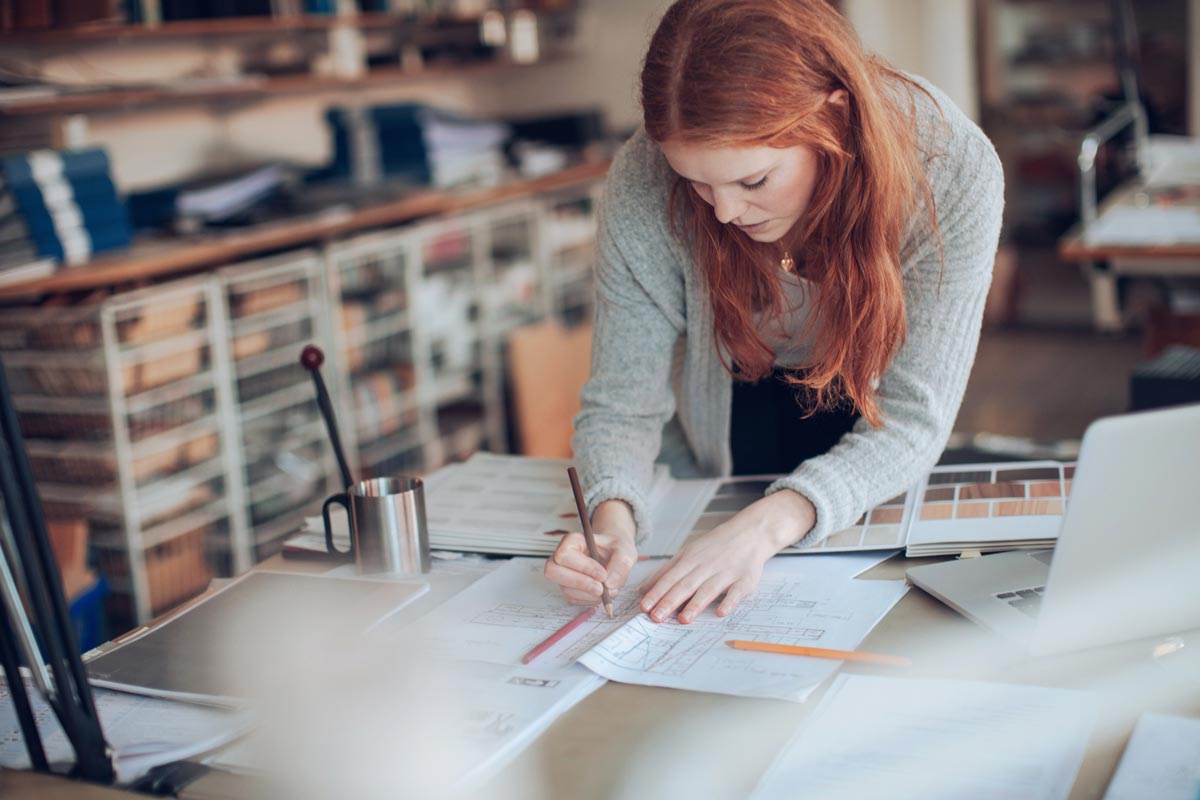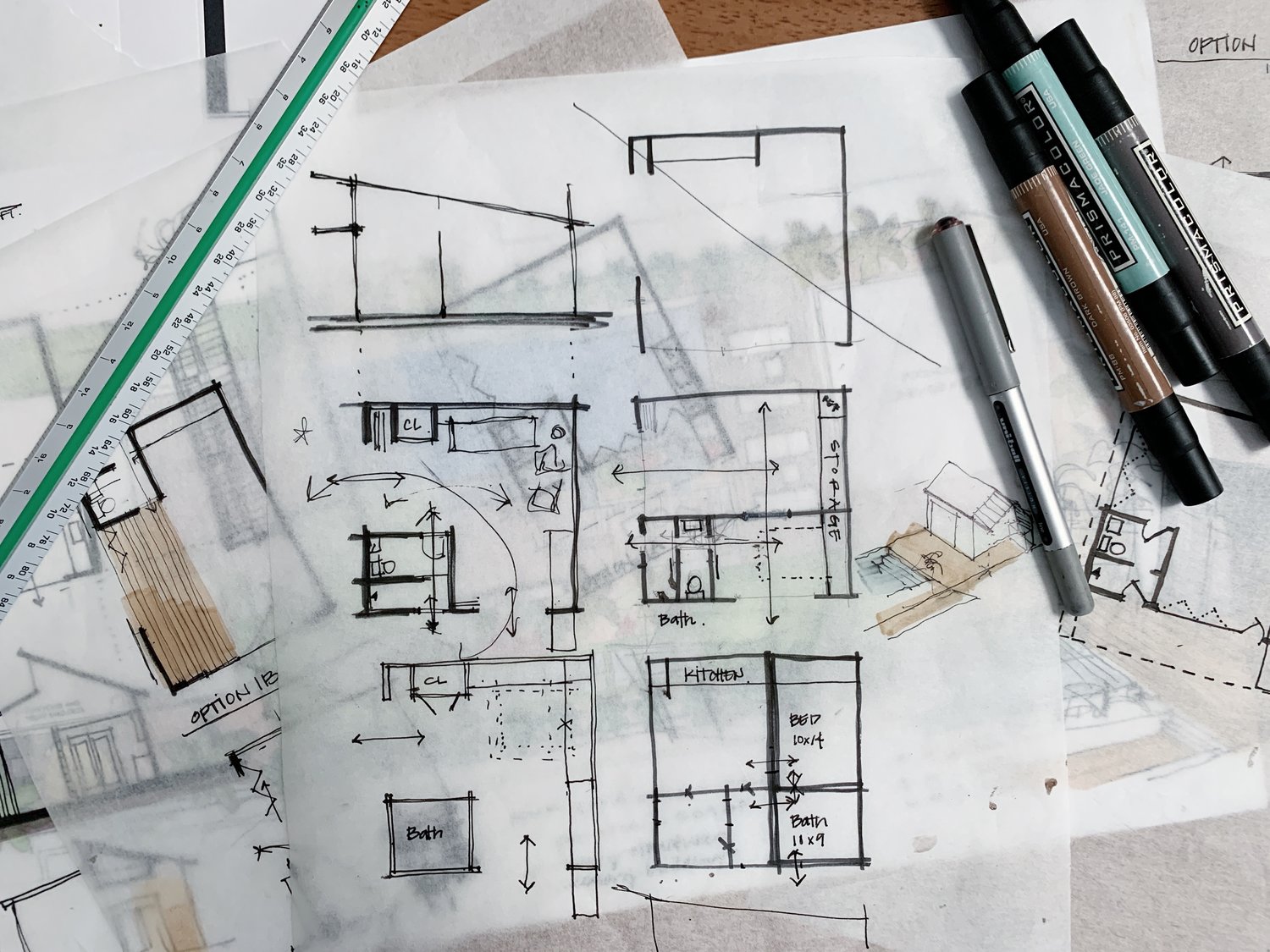Architect Checklist for New Commercial Projects
Architect Checklist for New Commercial Projects
Blog Article
The Function of Sustainability and Innovation in Modern Architect Practices
Sustainability and innovation are reshaping modern design in methods you could not anticipate. By embracing environment-friendly products and wise advancements, designers are not simply producing structures; they're crafting environments that boost our quality of life.
The Importance of Lasting Style
Sustainable style is essential not simply for the atmosphere yet additionally for boosting our top quality of life. When you embrace lasting layout, you're not just lowering your carbon footprint; you're creating spaces that promote health and wellness and wellness. Visualize living in a home that takes advantage of all-natural light, improves air top quality, and minimizes power prices. You'll feel a lot more connected and comfortable to nature.
Additionally, lasting design often brings about stronger areas. When buildings are created with environmentally friendly practices, they can motivate others to do the same, fostering a culture of sustainability. You'll see boosted residential or commercial property values and a greater sense of satisfaction in your environments.
Last but not least, by prioritizing sustainability, you're purchasing the future. You're guaranteeing that future generations enjoy a much healthier earth and lively neighborhoods. When you consider your next job, think about just how sustainable design can boost your life and those around you.
Cutting-edge Products Transforming Building Practices
As you check out ingenious products in style, you'll find that biodegradable building products are reshaping just how we think of sustainability. Recycled content technologies are giving new life to waste, while clever product modern technologies enhance developing effectiveness. These advancements not just advertise eco-friendliness yet also press the boundaries of style.
Eco-friendly Construction Materials
While standard construction materials commonly add to ecological degradation, eco-friendly building products are emerging as a sensible option that transforms building techniques. By including eco-friendly choices right into your layouts, you're not simply improving aesthetic allure; you're additionally making a favorable effect on the world. As you adapt to these ingenious materials, you'll locate that they provide sturdiness and convenience, enabling you to create structures that align with modern values of sustainability and responsibility.
Recycled Web Content Technologies
In recent years, innovative products with high recycled web content have actually transformed structure techniques, using engineers exciting new choices - Architect. You can currently incorporate materials like recycled steel, which not just lowers waste yet also boasts outstanding stamina. Recycled glass is an additional superb selection, offering visual allure while reducing ecological influence

Smart Material Technologies
Smart material technologies are improving the means you think about constructing techniques, providing dynamic services that adapt to altering problems. These ingenious products, such as self-healing concrete and thermochromic glass, enhance building performance and sustainability. By incorporating wise materials, you can develop energy-efficient layouts that react to their environment, reducing overall power usage.
The Combination of Smart Technologies in Design
As technology progresses, integrating smart remedies right into architectural design becomes crucial for producing sustainable and effective spaces. You can incorporate wise technologies like building management systems, which optimize power use and improve occupant convenience.
Including Internet of Things (IoT) devices permits smooth communication amongst various building systems, allowing you to make data-driven choices that enhance performance. Smart materials that react to ecological changes can further enhance your style, providing vibrant solutions to ever-changing conditions.
Energy Effectiveness and Renewable Resource Solutions
While many architects concentrate on visual appeals, focusing on energy effectiveness and renewable resource options is important for lasting design. You can start by integrating passive solar layout, which optimizes natural light and heat, lowering reliance on synthetic lighting and furnace. Use high-performance insulation and energy-efficient home windows to lessen energy loss.
Don't forget renewable resource systems-- mount solar panels or wind generators to generate tidy power on-site. You can additionally take into consideration including geothermal home heating and cooling down systems for an extra lasting temperature level law.
By selecting energy-efficient appliances and lights, you'll not just minimize power intake yet additionally reduced operational costs for constructing passengers.
Integrating these principles into your designs not only profits the setting but additionally boosts the building's appeal and worth. Eventually, your dedication to energy performance and sustainable power will certainly establish your projects apart in an affordable market.
Water Preservation Methods in Modern Style
Including water preservation techniques right into modern architecture is necessary for developing lasting structures that decrease ecological effect. You can achieve this by integrating rainwater harvesting systems, which accumulate and save rainfall for irrigation and non-potable usages. Executing low-flow fixtures and clever irrigation systems additionally lowers water intake, making sure efficient usage throughout the building.
Think about using drought-resistant landscape design, which requires less water and advertises biodiversity. Including absorptive paving products enables rainwater to infiltrate the ground, lowering overflow and recharging groundwater products.
Furthermore, setting up greywater recycling systems can repurpose water from sinks and showers for bathroom flushing or watering, additional preserving resources.
The Influence of Biophilic Layout on Health
Biophilic design brings nature indoors, and you'll observe its positive results on your health and wellness and joy. By enhancing interior air quality and connecting you with natural elements, these spaces can change your daily experience. Let's check out exactly how integrating these features can improve your general well-being.
Nature's Influence on Health and wellness
Just how does our atmosphere shape our visit this site health? When you include components of nature into your environments, it can greatly enhance your physical and psychological health. Biophilic style, which emphasizes all-natural light, plants, and natural materials, fosters a feeling of connection to the outdoors. This link can reduce tension, increase state of mind, and improve cognitive feature. You might find that spaces filled up with greenery encourage creativity and performance, making your day-to-day tasks feel more pleasurable. In addition, all-natural aspects can assist you really feel more relaxed and focused, promoting overall wellness. By prioritizing nature in your setting, you're not just beautifying your room; you're additionally supporting your wellness and happiness. Embracing biophilic style is a step towards a much healthier lifestyle.
Enhancing Indoor Air Top Quality
While several individuals focus on visual appeals and performance in design, improving indoor air quality plays a necessary duty in your overall health. By integrating biophilic design components, you can improve air top quality naturally. Focusing on these facets in your layout will not just boost your room yet also advertise a sense of calm and well-being.
Connection With Natural Environments
When you get in touch with all-natural components in your room, you not only boost its visual allure but additionally greatly enhance your health. Biophilic design motivates you to include functions like plants, all-natural light, and natural materials. These aspects create a relaxing ambience, decreasing stress and anxiety and anxiety. Study reveals that being around nature can improve your mood and cognitive function, assisting you feel a lot more focused and efficient. When you welcome the outdoors inside, you might see far better air high quality and enhanced convenience. Simple modifications, like including a living wall surface or large home windows, can greatly influence your experience (Architect). Ultimately, incorporating nature into your environment leads you to a healthier, better lifestyle, fostering a much deeper connection to the globe around you.
Future Fads in Sustainable Architectural Practices
As the world deals with pressing environmental obstacles, engineers are progressively welcoming cutting-edge approaches to sustainability that redefine how we layout and develop. You'll see a surge in biophilic design, incorporating nature right into city areas to enhance well-being and decrease energy consumption. Smart modern technologies, like AI and IoT, are improving energy administration in structures, maximizing source use, and lessening waste.
In addition, modular building is acquiring grip, permitting quicker, a lot more effective structure processes while decreasing environmental effect. Making use of sustainable products, such as recovered timber and recycled metals, is coming to be basic method. As you check find out here out these trends, anticipate a change towards round design, emphasizing the lifecycle of materials and advertising reuse and recycling.
These forward-thinking methods not only address ecological problems yet also produce healthier, a lot more resistant areas. By staying notified regarding these patterns, you can aid shape a lasting future in architecture.
Frequently Asked Concerns
Just How Can Sustainability Affect Task Costs and Spending Plans?
Sustainability can significantly impact task costs and spending plans. You may discover that preliminary financial investments in environment-friendly materials or technologies lead to long-term financial savings through energy performance, decreased waste, and potential federal government rewards, eventually balancing the total costs.
What Accreditations Exist for Sustainable Design?
You'll find official website several qualifications for sustainable style, consisting of LEED, BREEAM, and the Living Building Difficulty. These certifications help you demonstrate your commitment to sustainability and can enhance your job's reliability and allure to customers.
How Does Neighborhood Society Impact Lasting Design?
Neighborhood society forms sustainable style by mirroring neighborhood materials, worths, and traditions. You'll locate that integrating neighborhood aesthetic appeals and practices not only respects heritage but additionally enhances the performance and approval of your building projects.
What Role Does Client Education And Learning Play in Sustainable Practices?
Customer education and learning's essential for advertising sustainable techniques. When you notify customers regarding benefits, costs, and ecological impacts, you encourage them to make informed decisions, fostering a collaborative method that boosts the job's general sustainability.

How Can Architects Determine the Success of Sustainability Initiatives?
You can determine the success of sustainability campaigns by tracking energy intake, evaluating material efficiency, and celebration responses from customers. Routine audits and comparisons versus benchmarks will certainly assist you refine your strategies and display improvements successfully.
By incorporating smart products, you can create energy-efficient designs that react to their atmosphere, reducing general power consumption.While several engineers concentrate on visual appeals, prioritizing energy effectiveness and sustainable power solutions is important for sustainable layout. Biophilic style, which stresses all-natural light, plants, and organic materials, cultivates a sense of connection to the outdoors. Biophilic layout encourages you to include attributes like plants, natural light, and organic materials. As you explore these fads, anticipate a shift towards round layout, emphasizing the lifecycle of materials and promoting reuse and recycling.
Report this page